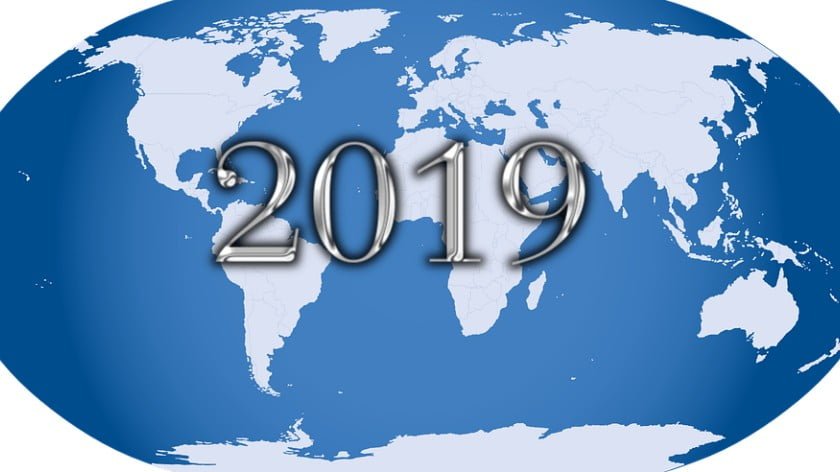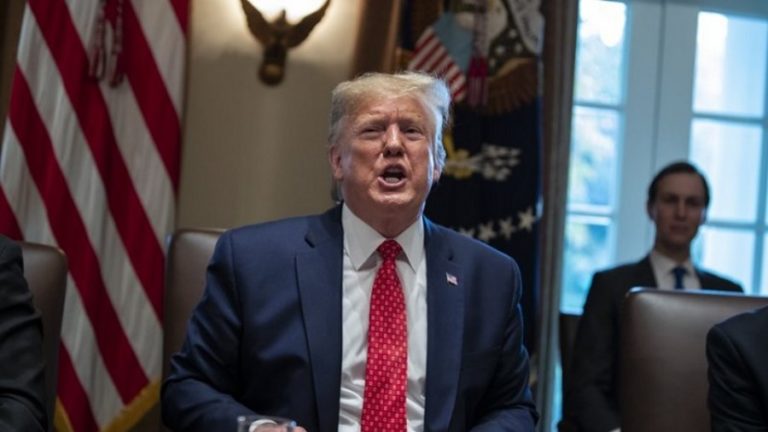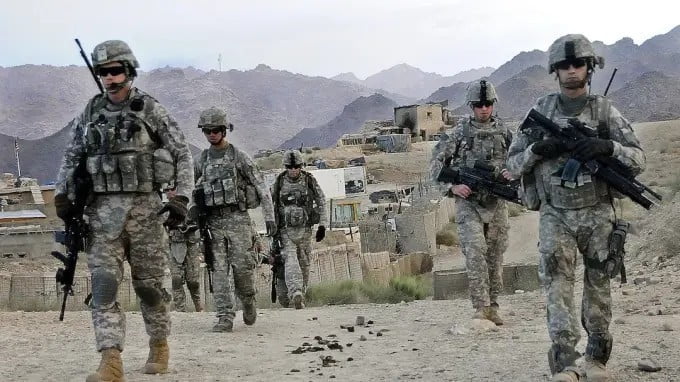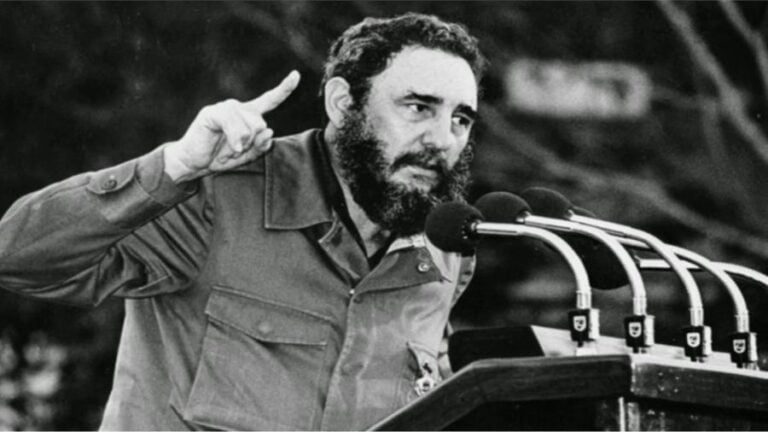2019 Forecast for Afro-Eurasia
The fast-moving and full-spectrum paradigm changes catalyzed by the emerging Multipolar World Order accelerated in 2018 and are poised to continue dramatically reshaping Afro-Eurasian geopolitics across the next year.
The Significance Of End-Of-The-Year Strategic Forecasting
2018 was the year when the New Cold War – which had been percolating since the Soviet dissolution in 1991 but began to seriously pick up in 2014 – finally became official, seeing as how Vice President Pence openly threatened China with an “all-out cold war” if it didn’t back down in the face of Trump’s so-called “trade war”. That event was a direct result of the fast-moving and full-spectrum paradigm changes catalyzed by the emerging Multipolar World Order, which will continue to accelerate into 2019 and are poised to continue dramatically reshaping Afro-Eurasian geopolitics. It’s a ritual of sorts for most analysts to publish forecasts about the coming year, so it’s with this spirit that the present exercise is being commenced.
It’s beyond the scope of this publication to point out each and every event of the past year that will influence what unfolds in the coming one, just like it’s unrealistic to comprehensively list everything that might happen across the next 12 months. Rather, the purpose of this exercise is to draw attention to some of the more prominent, but also lesser-known and/or scarcely followed, trends that have the highest chance of tangibly affecting geopolitical developments in 2019. Even if they don’t tangibly manifest themselves next year, they might nevertheless continue to affect the course of events in the future and ultimately reveal themselves in 2020 or sometime thereafter, but a lot can still be learned should that not happen at all.
Year-end forecasting is so insightful for many because it inspires them to creatively think about the coming year, as well as to reflect upon the events of the previous one that might make the predictions possible. This enhanced sense of geostrategic awareness could translate into a newfound passion to pursue related research, or at the very least imbue the reader with the feeling that they’re more informed than before. That’s why yearly forecasting exercises are so beneficial because everyone can derive something of significance from them even in the event that some of the predictions don’t play out as expected. That being said, the rest of the analysis will describe the two geostrategic constants and then proceed to the forecasts themselves.
Geostrategic Constants
In an increasingly uncertain world beset by all manner of unpredictability brought about by the consequences of the emerging Multipolar World Order, it helps to remember that there are two primary constants that can be relied upon going forward. These are Trump’s tendency towards chaos and Russia’s resolve to restore stability to whatever he disrupts. Instead of explaining the ins and outs of these two trends at length and the interplay between their dynamics, the reader is strongly recommended to peruse the following three pieces at their leisure and skim the hyperlinks therein in order to obtain a better understanding of these geostrategic constants:
* “’The Kraken’ Killed The Liberal-Globalist ‘New World Order’ At The UN”
* “Russia’s Grand Strategy In Afro-Eurasia (And What Could Go Wrong)”
* “What The US Really Wants From Russia”
Another one of the author’s previous works that could be useful for framing the following forecasts for the reader is his piece about “Top Trends: Hybrid War Balkanization, Trumpism vs. Globalism, Renaissance 2.0”, which goes beyond the three aforementioned constants and attempts to identify the prevailing megatrends affecting International Relations. All of this is pertinent because the forthcoming forecasts won’t elaborate too much on the reasons behind each prediction but will instead provide handy hyperlinks to guide readers to the author’s previous works on each topic (whenever possible), and having this background information in one’s mind will make it easier to understand everything.
Africa
Algeria Up In The Air, Libya Back On Land:
There’s a chance that Algeria and Libya could reverse regional roles if the passing of elderly President Bouteflika in 2019 unleashes a round of uncontrollable unrest in parallel with the former Jamahiriya slowly moving towards a “political solution” to its long-running conflict. That’s not to say that either of these will certainly happen, of course, but just that observers should keep a cautious eye on Algeria while lauding the progressive gains that have been made in Libya lately. Ultimately, the determining factor in both scenarios might be the outcome of the Turkish-Arab rivalry for influence over the western reaches of the “Ummah”.
Burkina Faso Becomes The Next Terrorist Base In West Africa:
The outbreak of “territorial terrorism” (i.e. terrorists who control defined areas of territory) in Mali following the disastrous NATO War on Libya has expectedly spread throughout the region and begun to seriously destabilize the pivot state of Burkina Faso, which is rapidly turning into the next terrorist base in West Africa. Boko Haram is still a force to be reckoned with, but it appears to have been mostly contained to northeastern Nigeria and is being fought against by a coalition of five regional states, whereas the groups entrenching themselves in Burkina Faso could threaten the much less powerful countries of Togo, Ghana, and Côte d’Ivoire.
The De-Facto Civil War In Cameroon Might Lead To The Unravelling Of Nigeria:
The rising African Great Power of Nigeria might soon face an existential crisis if the de-facto civil war that’s raging in neighboring Camerooncatalyzes a return to militancy from its own southern separatist groups. It’ll still take much more than that to unravel Nigeria, however, but the point to pay attention to is that Africa’s most populous country is already coming apart at the seams after communal clashes in the “Middle Belt” threaten to provoke further identity/”civilizational” discord between the majority-Muslim north and the majority-Christian south, the latter of which could be emboldened by the “Ambazonian” separatists. That said, February’s general election might see Nigerians give Buhari the boot and replace him with someone more competent, so the situation isn’t yet hopeless.
The Central African Republic Stabilizes And Russia Exports Its “Mercenary”-Security Model Elsewhere:
It’s been a long time coming, but the war-torn Central African Republic (CAR) might finally see some semblance of stabilization after the success of the UNSC-approved Russian “mercenary” mission to the country. Russia’s been working very hard to improve the security situation there without getting bogged down in “mission creep” or committing too many financial resources, and to its credit, it’s been able to restore a sense of “normalcy” to the capital and initiate a fledgling peace process with CAR’s many rebel groups. If Russia can expand its tangible military-diplomatic gains on the ground next year, then its “mercenary”-security model might then be exported to other conflict-prone African states.
The Destabilization Of Sudan Picks Up Speed:
Seemingly out of the blue, Sudan all of a sudden became destabilized after synchronized protests broke out in the country following an unexpected increase in food and fuel prices. This fragile state is at risk of fragmentation after losing its oil-rich southern half in 2011 following a decades-long civil war, and the worst-case scenario is that it “Balkanizes” into several pieces like its leader warned could happen when he visited Moscow in late 2017. The geostrategic consequences of that dismal development could be that Russia loses its pivotal position as the country’s transregional rail partner and China’s plans for a Sahelian-Saharan Silk Road are scuttled.
Ethiopian Stability Once Again Becomes Endangered:
Nobody could have thought in early 2015 that the War on Yemen would eventually lead to the UAE brokering peace in the Horn of Africa, but that’s exactly what happened last year, though the transregional power’s gains in Ethiopia are now endangered by the risk that some Oromo rebel factions and former members of the ruling Tigray elite might resort to armed militancy against the state, albeit for different reasons and not in coordination with one another. Prime Minister Abiy has his work cut out for him as he seeks to strike a balance between the country’s competing nationalisms, but time is running out and he needs to act fast.
Congolese Uncertainty Is Finally Resolved, But With What Result?:
The Democratic Republic of the Congo goes to the polls on Sunday in what’s supposed to be the cobalt-rich country’s first-ever democratic transfer of power since its 1960 independence, thereby ending years of speculation about who will finally succeed Joseph Kabila. Regardless of the how this uncertainty is resolved, the question will ultimately boil down to whether the outcome is sustainable or not. The victory of Kabila’s hand-picked successor would undoubtedly lead to his domestic opponents and the West alleging that the vote was rigged, while the Congolese “deep state” might work behind the scenes to undermine an opposition premier, with both outcomes carrying with them enormous risks to stability.
Tanzania And Mozambique Become The Scenes Of A New International Terrorist Conflict:
Tanzanian President John Magufuli is being painted by the Western Mainstream Media and their government backers as a “tyrant” for his pro-sovereignty and family-supporting policies, while neighboring LNG-rich Mozambique has recently befallen the fate of being targeted by terrorists. It’s this second-mentioned issue that poses a direct threat for Tanzania because of the chances that the terrorist unrest in northern Mozambique could spill over the border. While it’s unclear exactly who or what is driving the violence in that part of the country, the porous Tanzanian-Mozambican frontier could open the floodgates for these groups to spread throughout the region and trigger another international hybrid conflict.
The “Scramble For Africa” Picks Up Pace:
It’s unquestionable at this point in time that a modern-day “Scramble for Africa” is taking place, and this development will assuredly continue to unfold across the next year and beyond. Russia’s “balancing” role will be crucial for maintaining a peaceful equilibrium between each of the two extra-regional “blocs” that are converging in this space, though Moscow still needs to demonstrate that its “mercenary”-security model can succeed in the Central African Republic and then leverage this gain in order to differentiate itself from the other many players who are competing in the continent. Only then can it serve as a bridge between them, otherwise the “scramble” will be destabilizing for everyone.
Europe
Populism Remains A Potent Force:
Far from the “spent force” that the Mainstream Media attempted to portray it as in 2017 following Le Pen’s loss in the French election, populism is as potent as ever as proven by the left-wing and right-wing populist coalition government that took power in Italy earlier this year. Populism isn’t going away anytime soon, even if it changes form depending on the national conditions in which it’s prevalent, which means that it could pose a serious threat to the ruling EuroLiberals in 2019. France and Germany already experienced differing intensities of unrest over economic and migrant issues, respectively, and pronounced grassroots pressure might eventually influence some of their policies.
France And Germany Could Compete For Leadership In The EU:
In the aftermath of the “hard” or “soft” Brexit that’s pretty much bound to happen in March 2019, the ruling EuroLiberal elite in France and Germany might enter into a “friendly competition” with one another for leadership over the bloc but could inadvertently create the conditions by which Polish-led EuroRealism begins to spread further throughout the union than ever before. The pivot state in this respect is Italy, since its support one way or the other could decide whether the EU will largely remain as it is or if it’ll be heavily pressured to progressively undertake “decentralizing” reforms in order to return it back to a collection of sovereign nation-states.
The “Three Seas Initiative” Will Continue To Strengthen:
The Polish-led “Three Seas Initiative”, while having yet to achieve much in terms of substantial geopolitical gains (e.g. stopping Nord Stream II), will continue to strengthen its integrational competencies between the states of Central & Eastern Europe as it begins to fulfill its long-term strategic purpose of functioning as the US’ “cordon sanitaire” between Russia and Germany. NATO’s presence in this transregional space will deepen, though so too will China’s economic one as Beijing pairs this platform with its own “16+1” to spread its influence throughout the EU via its “backdoor”. Whether this results in competition or accommodation, it nevertheless makes the “Three Seas Initiative” more important than ever before.
The Balkans Are Rumbling But Will Likely Remain Under Control:
The last year saw Macedonia’s Color Revolutionary government agree to a controversial “name deal” with Greece, the NATO-occupied Serbian Province of Kosovo violating its own self-professed “constitution” by decreeing the creation of a national “army”, and NATO taking steps to bring Bosnia closer to the alliance. All three of these developments portend very negatively for Balkan stability, but the ever-louder rumblings coming out of this region don’t necessarily mean that an outbreak of conventional war is imminent. The situation will probably remain under a degree of “manageable control” because all governments involved are either actively or passively going along with these changes, but as always, there might still be some surprises in store.
Armenia’s “Defection” From Russia Might Be Followed By Belarus’:
The success of Armenia’s Color Revolution last spring saw a vehemently pro-Western activist-“politician” catapulted into power, though Pashinyan has since attempted to “balance” between Russia and his new patrons. Even so, this in and of itself has complicated Armenian-Russian relations and can be regarded as a “defection” of sorts because his country is no longer the reliable CSTO and EAU ally that it’s institutionally obligated to be, and the lack of any punitive consequences from Russia for this audacious move seems to have emboldened Belarus to follow suit in recent weeks. It therefore wouldn’t be unexpected if Minsk breaks ranks with Moscow like Yerevan did and pursues a more pro-Western path in 2019.
Mideast
The Competition Between Turkey & Qatar and the GCC & “Israel” Really Takes Off:
One of the most defining trends of the coming year might be that the Muslim Brotherhood vision backed by Turkey and Qatar enters into heated geopolitical conflict with the pro-monarchist model protected by the GCC and “Israel”. Truth be told, these two ideologies/systems have been kinetically clashing since the 2011 “Arab Spring” theater-wide Color Revolutions, but the stakes are still very high and the form of this competition is changing as Turkey vies with Saudi Arabia for leadership over the western (African and West Asian/Mideast) reaches of the “Ummah”. In fact, it’s this struggle which is largely responsible for the breakthrough developments that just recently occurred in Syria.
Syria Finally Sees Stability:
Damascus is in the midst of a rapid rapprochement with the GCC following the reopening of the Emirati Embassy to the country, spurred along as it was by that bloc’s dual security dilemmas with both Iran and also recently Turkey. “Israel’s” resumption of bombing missions against the Arab Republic could combine with its target’s GCC rapprochement to pave the way for a dignified but “phased withdrawal” of Iranian forces facilitated by Russia. Concerning the Kurdish-controlled Northeast, it’s a welcome sign that the PYD-YPG invited the Syrian Arab Army (SAA) into Manbij, which might eventually lead to the SAA regaining control the frontier while the PYD “autonomously” administers the trans-Euphrates’ resource-rich interior.
The End Of Netanyahu?:
“Israel’s” longest-serving premier since Ben-Gurion is fighting for his political life ahead of snap elections that will be held in April 2019, meaning that he might finally be ousted from power once and for all. The concern, however, is that Netanyahu could stage high-profile military stunts in Palestine, Lebanon, and/or Syria to distract the masses from his corruption probe and win over the right-wing “defectors” from his coalition before the vote. If he fails with these possible ploys, then there’s a very high chance that he might be replaced by an even more right-wing leader who could prove to be even more disastrous for the region.
“Weapons Of Mass Migration” Might Push Lebanon To The Brink:
The chronically dysfunctional country of Lebanon might be pushed to the brink by what Ivy League researcher Kelly M. Greenhill previously described as “Weapons of Mass Migration” (WMM) in the event that the large-scale refugee influx from neighboring Syria doesn’t thin out before it causes political consequences in the host state. Hezbollah’s enemies couldn’t defeat it on the battlefield in neighboring Syria, but its domestic political rivals and even “Israel” itself might seek to manipulate WMM in order to cause unforeseen problems for the “Resistance” vanguard back in its homeland, meaning that this is a serious issue that mustn’t be neglected by the organization’s leadership.
South Yemen Regains International Recognition (Sort Of):
The incipient peace process that began in late-2018 could see Yemen’s warring sides agreeing to recognize the autonomy of South Yemen as part of a “compromise” political solution for ending the war, bearing in mind that it’s already practically “independent” of the previous domain of “North Yemen” even if it survives under Emirati tutelage (at least for now). The “international community” would therefore recognize it as an autonomous region if the Yemenis themselves agreed to this first, which appears to be inevitable considering that this state of affairs is already a fait accompli and that neither the Houthis nor Hadi have any real hope of reasserting their control over South Yemen.
“Little Sparta” Upstages Its “Big Brother”:
2019 will probably be the year when the world finally recognizes that the UAE is much more powerful than its Saudi “big brother”. After all, Abu Dhabi Crown Prince Mohammed Bin Zayed (MbZ) is his Saudi counterpart Mohammed Bin Salman’s (MbS) mentor, and the Emirates has succeeded in building a worldwide airport and seaport empire that even includes a constellation of naval bases in the strategic Red Sea and Gulf of Aden regions. Although they failed to accomplish their goal in Yemen, they nevertheless obtained invaluable experience and learned how to manage mercenary forces and coordinate airstrikes. Most importantly, the UAE also lacks Saudi Arabia’s intense domestic political faultlines.
Saudi Arabia Will Continue To Diversify Its Foreign Policy:
The end of 2018 saw MbS defy his former Western patrons by being warmly embraced by none other than President Putin at the G20 in the aftermath of Khashoggi’s killing, which was natural seeing as how Russia stands to gain the most from that crisis. Saudi Arabia was already shifting its grand strategy even before then, but it’ll expectedly be more pronounced in the coming year after President Putin’s upcoming trip to the Kingdom sometime in early 2019, especially if the two countries sign a deal for the S-400s. In parallel with its outreaches to Russia, Saudi Arabia will also rely on its partnership with China to help implement the Crown Prince’s ambitious “Vision 2030”.
Iran Could Reorient Itself Towards The Golden Ring:
Facing heavy Hybrid War pressure inside of its borders through the multipronged threats of foreign-backedterrorist insurgencies and a debilitating sanctions regime, Iran might reorient its strategic focus away from the “Mashriq” after concluding that it’s reached the climax of its influence there (particularly if Russia facilitates its dignified but “phased withdrawal” from Syria) and towards the Golden Ring of Multipolar Great Powers instead. Russia, being the Islamic Republic’s primary “pressure valve” during this time of intense international pressure upon it, could “encourage” the country to move in this direction, though Iran’s “deep state” divisions between the “principalist” and “reformist” factions might hinder the implementation of this policy.
South Asia
China Could Be Compelled To Bankroll BRI-Aid:
China’s global Belt & Road (BRI) vision of New Silk Road connectivity focuses too much on hard infrastructure and not enough on its soft counterpart. This oversight is the worldwide project’s Achilles’ heel because it creates space for socio-economic issues at the local level to fester into HybridWar threats that could be manipulated by hostile third-party actors. Seeing as how the success of CPEC will either make or break the rest of BRI, it’s to China’s supreme strategic interests to roll out an international aid program tentatively titled “BRI-Aid” in order to help Pakistan devise sustainable solutions in this respect, with this initiative subsequently being exported all along the Silk Roads upon perfection.
The Hybrid War On CPEC Could Go Either Way:
The Indo-American Hybrid War on CPEC succeeded in causing chaos in Karachi and Chabahar but might have been brought to an abrupt end after the assassination of Baloch terrorist leader Aslam Achu in Afghanistan. It’s still too early to say, and India could always double down on this asymmetrical warfare campaign, but it can’t be ruled out that New Delhi might try to enter into a grand bargain with Beijing as part of a so-called “détente” between the two rising Asian Great Powers that could see it agreeing to downscale and ultimately cease its support of the kinetic manifestation of the Hybrid War on CPEC in exchange for a strategic partnership that India believes might eventually “marginalize” Pakistan.
Could A Chinese-Indian Rapprochement Really Be In The Cards?:
Building off of the above, India might be wagering that China’s grand strategic dependence on CPEC could be reduced in the event that a political breakthrough can be achieved in Indian-Chinese relations whereby the “China-India-Plus-One” format that Beijing unveiled over the summer could be put to use in Nepal and Myanmar for diversifying the People’s Republic’s future trade reliance away from CPEC. India might also seek to revive the stalled BCIM trade corridor too in that case, though all of this is conditional on New Delhi generating enough “credible” goodwill with China to convince it to allow India to exert influence over its future trade routes, which is questionable at this moment.
Modi Might Be On His Way Out:
It’s way too early to say, but Modi might be on his way out if the BJP can’t manipulate communal tensions to the point of “inspiring” the increasingly radicalized Hindu majority to come out to the polls in his support. The upcoming spring election will be a defining moment for Indian history, the region, and Eurasian geopolitics as a whole because of the profound policy shifts that could occur if he loses. Not only that, but the aforementioned interlinked scenarios about a possible Chinese-Indian rapprochement might be proven to have been nothing more than campaign posturing by Modi if he backstabs his partners right after winning reelection by (re-)pivoting towards the US.
It’s High Time To Pay More Attention To Regional Hot Spots:
Moving into the realm of “dark scenarios”, the US’ plans for a military drawdown in Afghanistan might just be a ruse to divide the Taliban into “moderates” and “hardliners” prior to blaming Pakistan for the failure of any talks, after which America might sanction CPEC under trumped-up “anti-terrorist” pretenses. This isn’t the only regional hot spot, however, since the Maldives and Sri Lanka might be jolted from the relative “normalcy” that’s recently set in with both if the Chinese-Indian competition re-erupts sometime next year. Far from being a bridge between them along a potential “Himalayan Silk Road”, Nepal might even turn into a proxy battleground between them too, as could Bangladesh after its contentious elections this Sunday.
East And Southeast Asia
Russia And Japan Make Progress On A Peace Deal But Success Remains Elusive:
Both Great Powers are serious about putting their World War II-era problems behind them and moving forward with their promisingstrategic partnership, but success might prove elusive unless a breakthrough proposal such as the “Northern Islands Socio-Economic Condominium” (NISEC) is seen as an acceptable “compromise” by each of them. It’s uncertain whether they can “meet in the middle” on this highly emotional issue, however, seeing as how it’s festered for so long. In addition, the US has an obvious interest in keeping these two countries apart as long as possible. That said, Japan’s 21st-century grand strategy is incomplete without finalizing its rapprochement with Russia, so Tokyo might come around sooner than later.
The “New Washington Consensus” Stumbles In North Korea:
Trump is trying to advance a “New Washington Consensus” through his country’s incipient rapprochement with North Korea, but this ambitious vision of positioning the US as a “trusted” developmental partner for “Global South” states might stumble if Pyongyang doesn’t make adequate progress on implementing its vague denuclearization promises. Any perceived backsliding on its previous commitments could trigger Trump into reinitiating verbal and diplomatic hostilities against North Korea, which could in turn be capitalized upon by his domestic political foes and international rivals in order to portray his much-touted peacemaking success of 2018 as a failure.
The Greater Mekong Subregion Experiences A Renaissance:
The unilateral ceasefire that the Myanmarese Tatmadaw decreed with the country’s numerous rebel groups bodes well for national stability in one of the last economic frontiers in Asia, as does the upcoming election in Thailand in February, both of which could combine to enable the Greater Mekong Subregion to experience a renaissance if everything proceeds according to plan. Should that happen (and it’s far from certain in the case of Myanmar at least), then that scenario could make those two neighboring countries more attractive destinations for infrastructural investment from both the Indo-Japanese “Asia-Africa Growth Corridor” and China’s BRI, with the outcome being that their “competitive connectivity” there might eventually lead to a strategic convergence.
Indonesia’s Geopolitical “Balancing” Act Is Put To The Test:
Indonesia has thus far attempted to “balance” between China and the “Quad” but its strategy will probably be put to the test in 2019 as the US pushes it to choose one side over the other after its April elections. Despite the naturally occurring Hybrid War tensions that are re-erupting in West Papua and which could be manipulated by the US to pressure Indonesia into aligning with it, the country would do well to learn from the examples spearheaded by its ASEAN allies in the Philippines and Vietnam who have skillfully resisted American coercion by seeking out Russia’s “balancing” role via the so-called “Neo-NAM” that it’s unofficially pioneering through “military diplomacy”.
Australia Returns To Being A South Pacific Power:
Although regarded as part of Oceania and not Asia, it’s worthwhile to mention how Australia will probably regain its status as the South Pacific’s hegemon. Its regional authority has declined in recent years as it came up against stiff competition from China, but the US’ curious co-opting of Fiji into its anti-Daesh coalition and Canberra’s decision to build a naval base in Papua New Guinea’s northern island of Manus could make it more difficult for China to exert its Silk Road leadership in this space, especially when weaponized fake news about “secret agents” and Beijing’s supposed plans to build its own base in Vanuatu was used as the basis for the Australian-American axis to actively counter it.
Concluding Thoughts
End-of-the-year scenario forecasting can be a very difficult and almost intimidating exercise to commence, but it’s a worthwhile venture because of the insight that it could reveal to readers about how certain developments of the past year might be poised to shape future ones in the next. As was mentioned at the beginning, this work is far from comprehensive but aimed to pinpoint some of the main drivers of forthcoming events, after which an attempt was made to boldly predict the geopolitical outcome of these influences if they continued to remain relevant in 2019. Some of the scenarios presented in this work were admittedly provocative, but that was partially to inspire others to constructively criticize them and carry out their own research if they were so inclined.
By Andrew Korybko
Source: Eurasia Future







